Volkswagen Golf Service & Repair Manual: Removing and installing brake master cylinder, RHD vehicles
| Special tools and workshop equipment
required |
|
|
|
| Torque wrench -V.A.G 1331- |
|
|
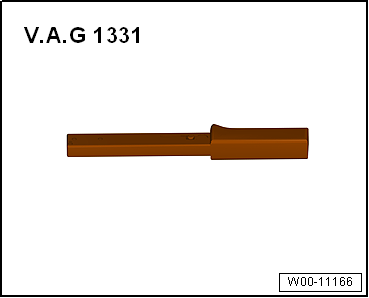
|
| Torque wrench -V.A.G 1410- |
| Tool inserts (11 mm) -V.A.G 1331/2- |
|
|
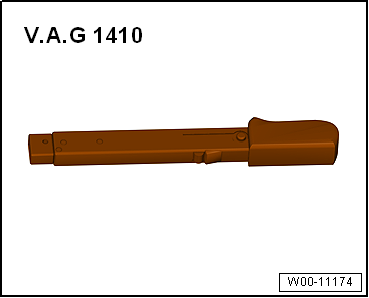
|
| Brake filling and bleeding equipment -VAS 5234- |
|
|
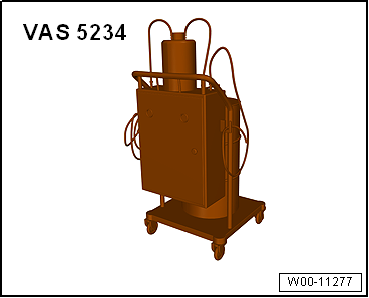
|
| Sealing plug repair kit -1H0 698 311 A- |
| Hot air blower, e.g. hot air blower -VAS 1978/14A- |
|
|
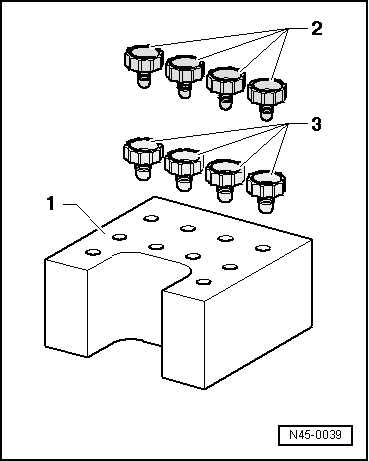
|
| The brake master cylinder is located on right-hand side of
the engine compartment. |
| 1 - |
Brake servo and brake master cylinder |
| 2 - |
Brake system pressure accumulator -VX70- |
| 3 - |
ABS control unit -J104- with ABS hydraulic unit -N55- |
| Make sure not to bend the brake lines in the area of the
brake master cylinder. |
| – |
Observe safety precautions when working on the high-voltage
system
→ Chapter. |
| – |
Observe the risk classification of the high-voltage system
→ Electric drive; Rep. gr.00. |
| – |
Disconnect battery
→ Electrical system; Rep. gr.27. |
| – |
Remove engine cover
→ Rep. gr.10. |
|
|
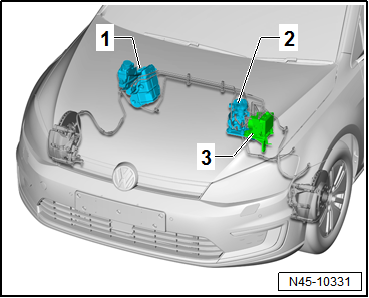
|
| – |
Disconnect fuel lines -1- and
-2- and lay to side. Separate
plug-in connectors
→ Rep. gr.20. |
|
|
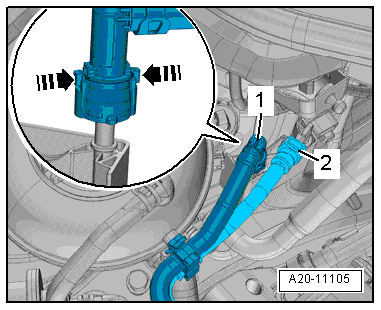
|
| Vehicle with heat shield: |
| – |
Detach heat shield -2- at top
of brake fluid reservoir -3--arrows-. |
| Continuation for all models: |
| – |
Place sufficient lint-free cloths in area of engine,
subframe and gearbox. |
|
|
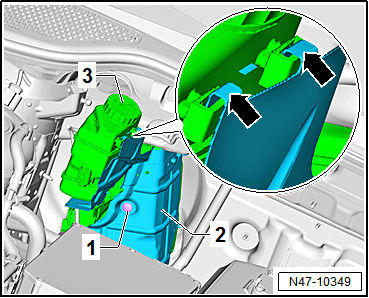
|
| – |
Release and disconnect connector -2-
from brake fluid level warning contact -F34- at brake fluid
reservoir -1-. |
| – |
Draw off as much brake fluid as possible from brake fluid
reservoir using brake filling and bleeding equipment -VAS 5234-. |
|
|
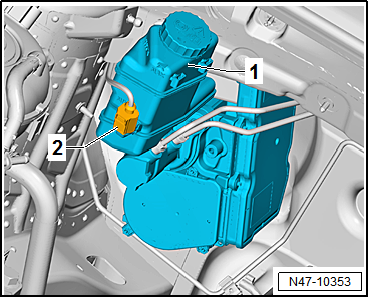
|
| – |
Mark brake lines -A- and
-B- on brake master cylinder. |
| – |
Unscrew brake lines -A- and
-B- from brake master cylinder. |
| – |
Immediately seal brake lines and open connections with
sealing plugs from repair kit -1H0 698 311 A- or suitable plugs
from engine bung set -VAS 6122-. |
|
|
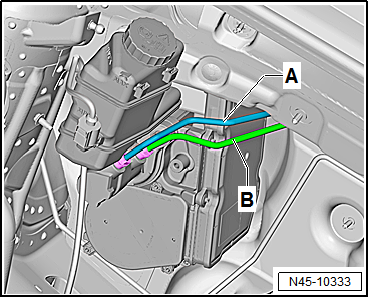
|
| – |
Remove brake master cylinder -1-
from brake servo. |
| Install in reverse order. Note the following points: |
| – |
When assembling brake master cylinder with brake servo, make
sure push rod is properly positioned in brake master cylinder. |
| – |
When joining brake master cylinder to brake servo, make sure
seal is properly seated. |
| – |
Bleed brake system
→ Chapter. |
| – |
Subsequently bleeding the brake system
→ Chapter. |
| – |
Perform basic setting for electromechanical brake servo
→ Vehicle
diagnostic tester. |
| → Chapter „Assembly overview – Brake system pressure accumulator
-VX70-, RHD vehicles“ |
| → Heating, air conditioning system; Rep. gr.87. |
|
|
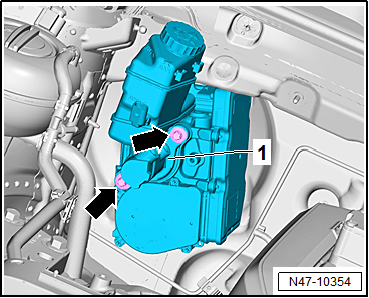
|
Special tools and workshop equipment
required
Torque wrench -V.A.G 1331-
...
Special tools and workshop equipment
required
Torque wrench -V.A.G 1331-
...
Other materials:
General description of Midtronics -INC 940- battery tester
Batteries in VW vehicles may only be charged with battery
chargers approved by VW. In the USA/Canada, it is permitted for
the Midtronics -INC 940- battery charger to be used.
Midtronics -INC 940- battery charger combines battery
charging ...
Belt height adjuster
Fig. 68 Next to the front seats: belt height
adjuster
First read and observe the introductory information
and safety warnings The seat belt height adjusters for the front seats can
be used to adjust the position of the seat belt on the shoulder so that it can be
fastened properly:
P ...
Removing and installing water deflector
Note
Removal and installation are described only for the left side.
Removal and installation of the right side are similar.
Removing
–
Starting at bottom end, pull water deflector
-1- out of clip -3- and retaining
strip -2-.
...
© 2016-2025 Copyright www.vwgolf.org

 Removing and installing brake master cylinder, LHD vehicles
Removing and installing brake master cylinder, LHD vehicles Removing and installing brake system pressure accumulator -VX70-, LHD
vehicles
Removing and installing brake system pressure accumulator -VX70-, LHD
vehicles









